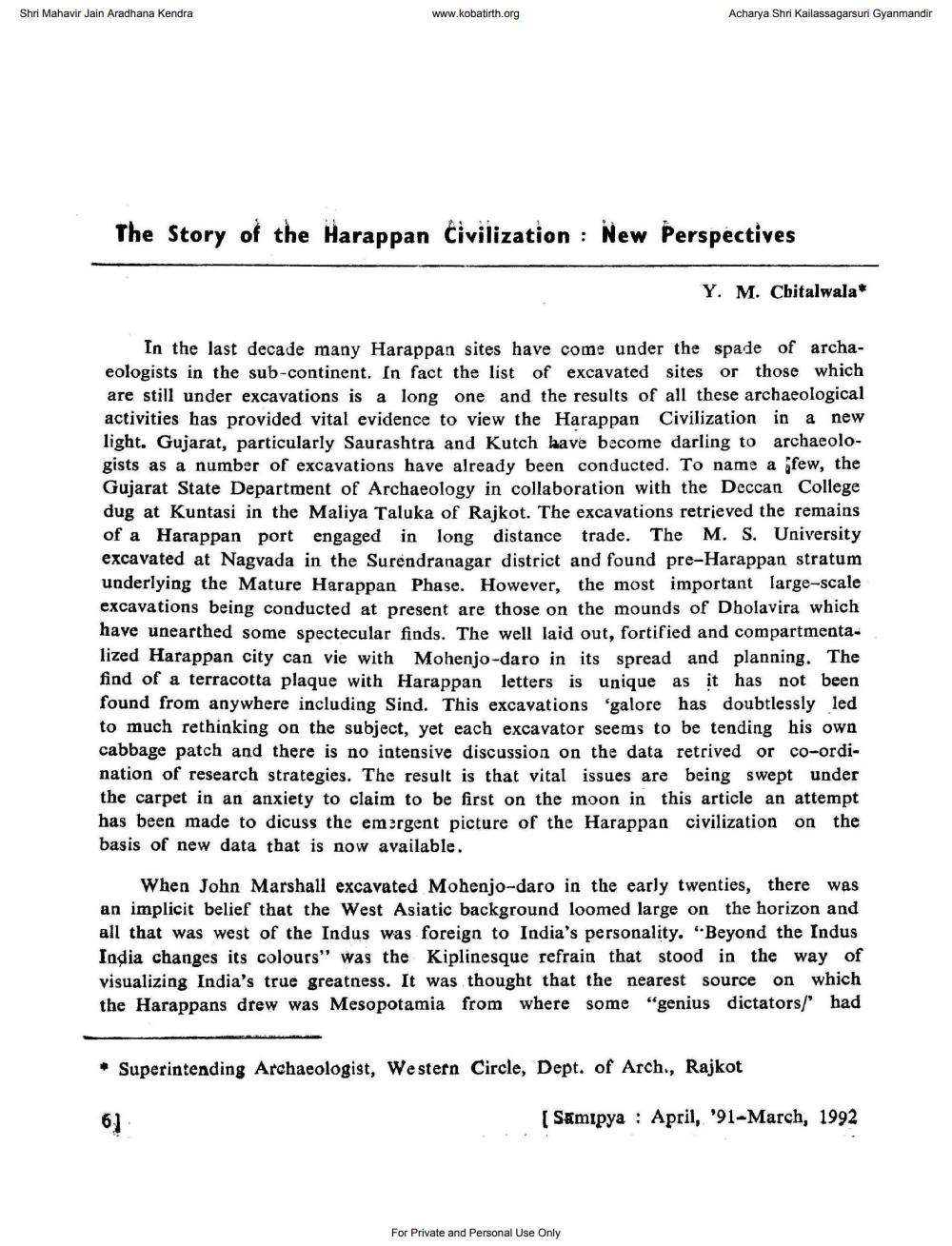Book Title: Samipya 1991 Vol 08 Ank 01 02 Author(s): Pravinchandra C Parikh, Bhartiben Shelat Publisher: Bholabhai Jeshingbhai Adhyayan Sanshodhan Vidyabhavan View full book textPage 8
________________ Shri Mahavir Jain Aradhana Kendra www.kobatirth.org Acharya Shri Kailassagarsuri Gyanmandir The Story of the Harappan Civilization : New Perspectives Y. M. Chitalwala* In the last decade many Harappan sites have come under the spade of archaeologists in the sub-continent. In fact the list of excavated sites or those which are still under excavations is a long one and the results of all these archaeological activities has provided vital evidence to view the Harappan Civilization in a new light. Gujarat, particularly Saurashtra and Kutch have become darling to archaeologists as a number of excavations have already been conducted. To name a few, the Gujarat State Department of Archaeology in collaboration with the Deccan College dug at Kuntasi in the Maliya Taluka of Rajkot. The excavations retrieved the remains of a Harappan port engaged in long distance trade. The M. S. University excavated at Nagvada in the Surendranagar district and found pre-Harappan stratum underlying the Mature Harappan Phase. However, the most important large-scale excavations being conducted at present are those on the mounds of Dholavira which have unearthed some spectecular finds. The well laid out, fortified and compartmentalized Harappan city can vie with Mohenjo-daro in its spread and planning. The find of a terracotta plaque with Harappan letters is unique as it has not been found from anywhere including Sind. This excavations 'galore has doubtlessly led to much rethinking on the subject, yet each excavator seems to be tending his own cabbage patch and there is no intensive discussion on the data retrived or co-ordination of research strategies. The result is that vital issues are being swept under the carpet in an anxiety to claim to be first on the moon in this article an attempt has been made to dicuss the emergent picture of the Harappan civilization on the basis of new data that is now available. When John Marshall excavated Mohenjo-daro in the early twenties, there was an implicit belief that the West Asiatic background loomed large on the horizon and all that was west of the Indus was foreign to India's personality. "Beyond the Indus India changes its colours" was the Kiplinesque refrain that stood in the way of visualizing India's true greatness. It was thought that the nearest source on which the Harappans drew was Mesopotamia from where some "genius dictators/ had • Superintending Archaeologist, Western Circle, Dept. of Arch., Rajkot ( Samipya : April, '91-March, 1992 For Private and Personal Use OnlyPage Navigation
1 ... 6 7 8 9 10 11 12 13 14 15 16 17 18 19 20 21 22 23 24 25 26 27 28 29 30 31 32 33 34 35 36 37 38 39 40 41 42 43 44 45 46 47 48 49 50 51 52 53 54 55 56 57 58 59 60 61 62 63 64 65 66 67 68 69 70 71 72 73 74 75 76 77 78 79 80 81 82 ... 134
